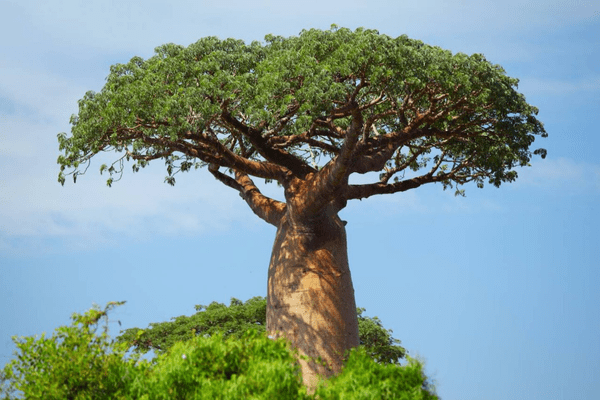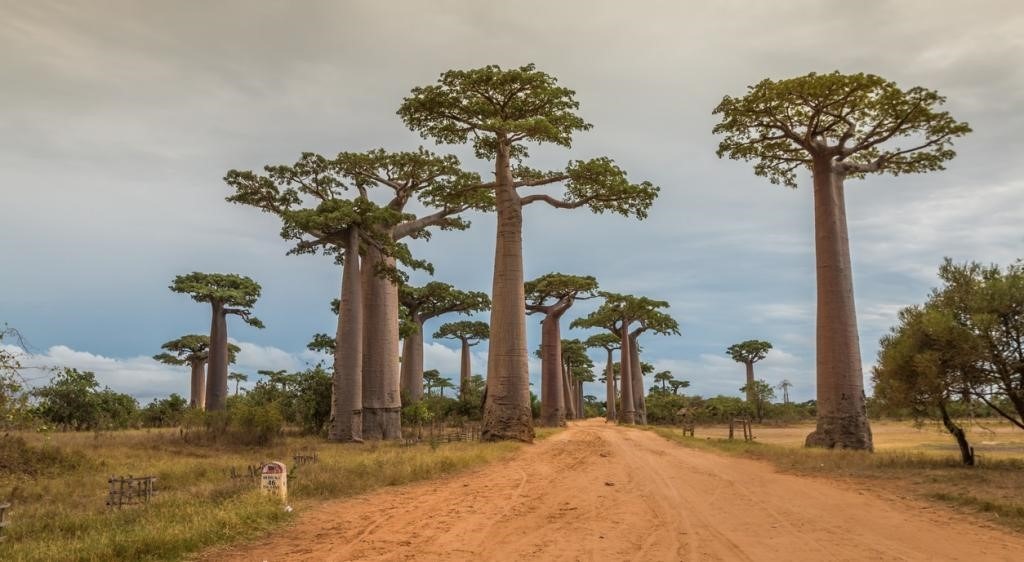The Global Society for Preservation of Baobabs and Mangroves has initiated a mission to rejuvenate baobab trees.
About Baobab Tree (Upside-down Tree):
- Baobabs are long-lived deciduous trees that range from 20 to 100 feet in height.
- These trees feature broad trunks and compact tops, typically growing in regions such as Africa, Madagascar, and Australia.
- Baobabs are also referred to as the “upside-down tree” because their leafless branches in the dry season resemble roots.
- The species is considered prehistoric, existing before the splitting of the continents over 200 million years ago.
Description and Features
- Baobab trees can live to become thousands of years old; the oldest recorded baobab was the Panke baobab in Zimbabwe, aged 2,450 years.
- Their growth rings are very faint, making it difficult to determine their age precisely.
- The trunk of a mature baobab is massive, often bottle-shaped or cylindrical, and tapers from bottom to top.
- The tree’s fruit is round or oval-shaped and is highly nutritious.
Habitat
- Baobab trees are found across nine species: Two native to mainland Africa, six to Madagascar, and one to Australia.
- A significant number of baobabs, approximately 1,000 trees, grow in and around Mandu town in the Dhar district of Madhya Pradesh, India.
Why are they called the ‘Tree of Life’?
- Baobabs are capable of storing large amounts of fresh water in their trunks.
- They can produce nutritious fruits even during the driest years, providing essential sustenance and making them critical during water scarcity.
- The fiber from the bark is utilized to create various products, including rope, cloth, and strings for musical instruments.
Ref:Source
| UPSC IAS Preparation Resources | |
| Current Affairs Analysis | Topperspedia |
| GS Shots | Simply Explained |
| Daily Flash Cards | Daily Quiz |



